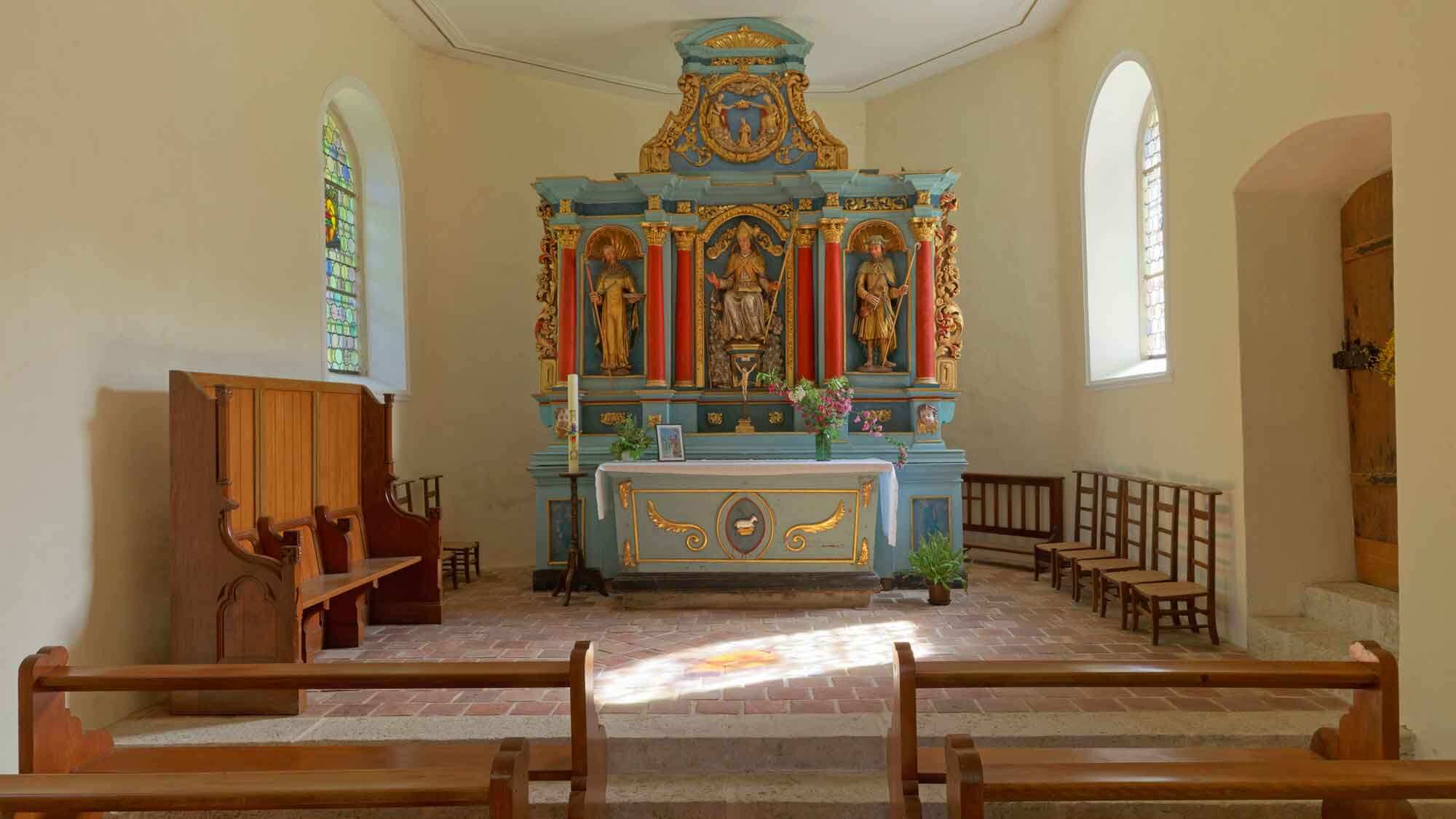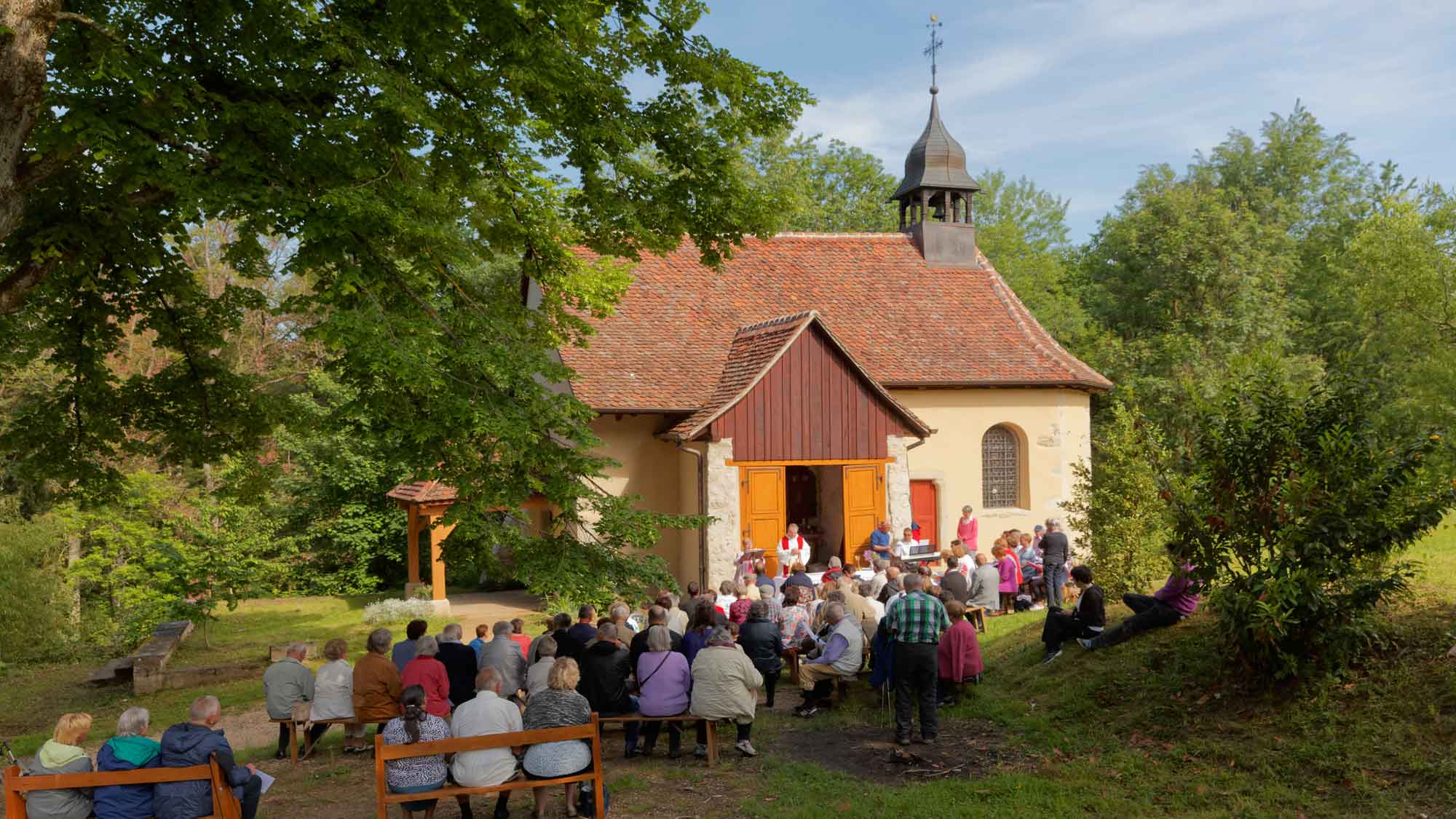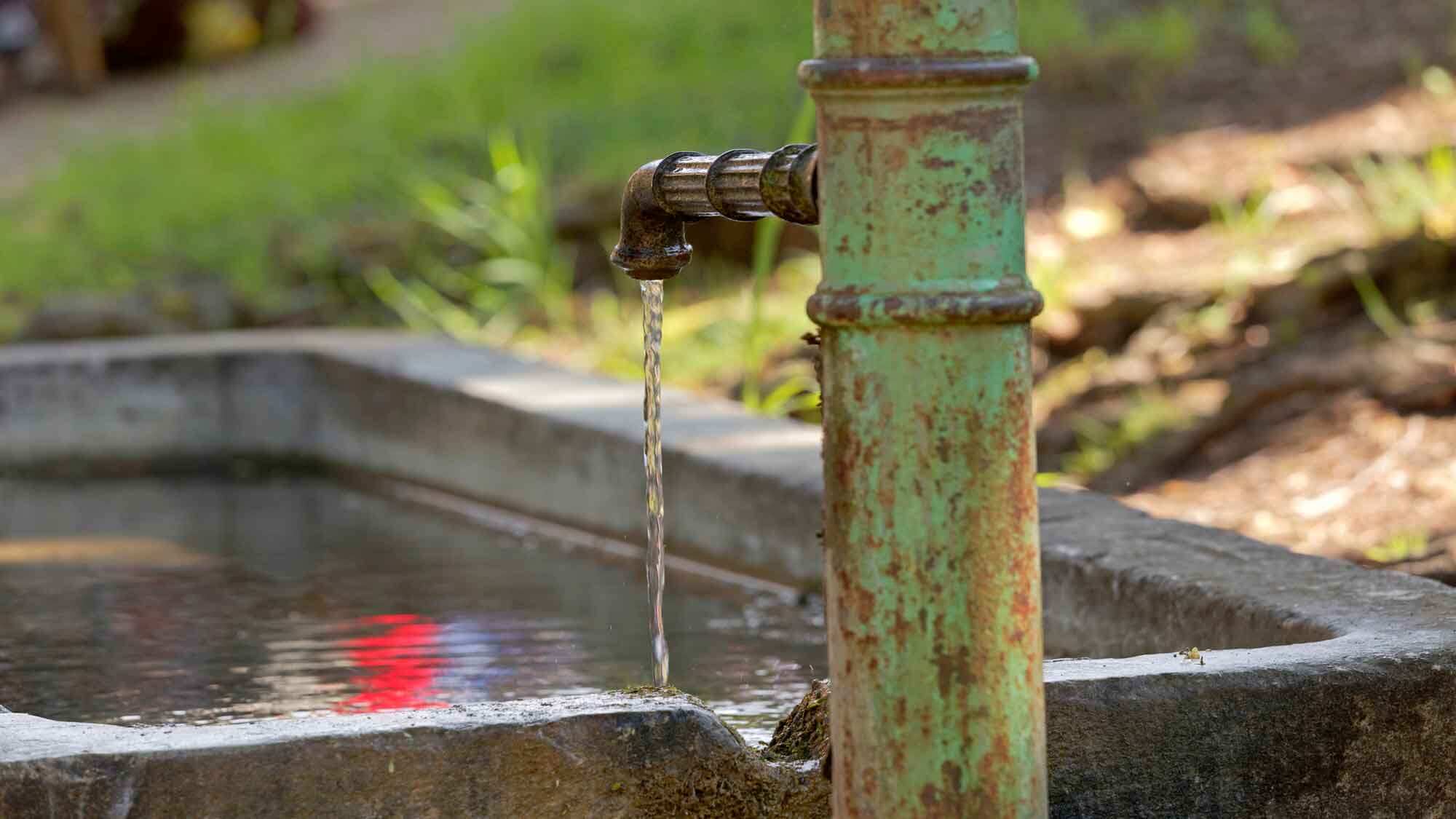Source, chapel and hospitality
This wonderful place with chapel and former brother house in a quiet forest clearing between Oltingue and Liebenswiller is a place of pilgrimage of a special kind. Once a year, on Whit Monday, the chapel with its delicate baroque altar becomes the religious centre of the area. The exterior altar, a special feature, is opened for the outdoor fair, which begins at ten o’clock. If Saint Peter so wishes, the warm morning sun illuminates the little sanctuary, while a few ponies graze peacefully on the meadow. The crowd is mixed: churchgoers from the surrounding villages, walkers who have come here for breakfast or cyclists who take a break. A peaceful community that honors St. Bricius.
There are a number of legends surrounding Saint-Brice, but the written sources are poor. In the 17th and 18th centuries, a procession to St. Bricius after the morning service on Whit Monday and also to Philipp and Jakobi (May 1st) is attested. Until 1773 there was also a market on Whit Tuesday. Saint-Brice was mainly visited for physical ailments. Countless votive offerings, mostly made of sheet metal, such as arms, legs, pregnant women and toads, as symbols of the uterus, were found in the attic of the chapel in 1910. They are now in the Archaeological Museum of Strasbourg. Excavations on the east side of the chapel have revealed four burials that date back to between 900 and 980. Saint-Brice used to be located at an important transit point, a Roman road that led from Allschwil to Oltingue on the hill northwest of the Leimental, where it led into the large main connection from Kembs to Besançon. Perhaps the place was already a place of worship back then, and the spring that still feeds the fountain at Saint-Brice is the reason for a station where you could enjoy yourself.




